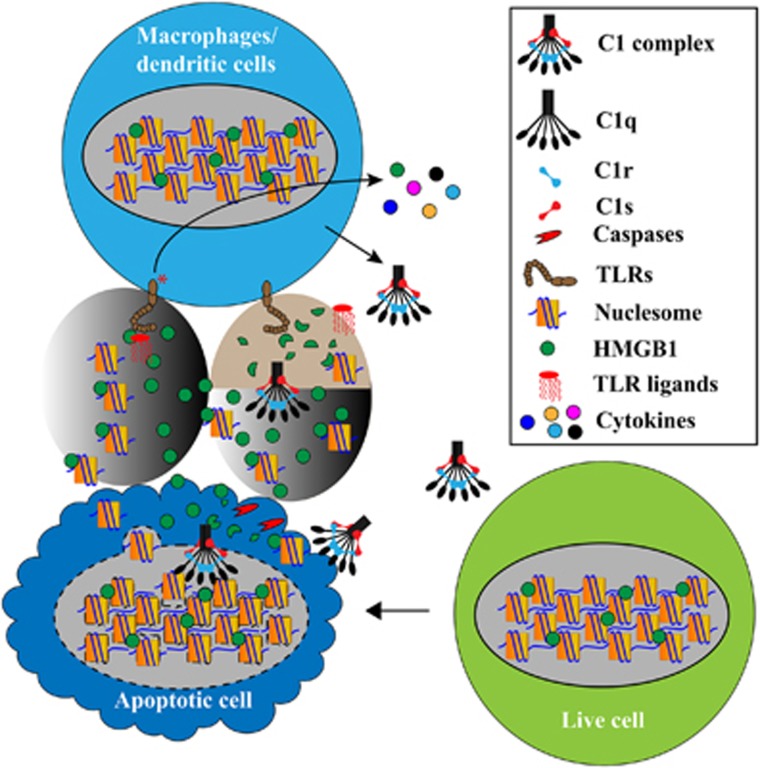Figure 1.
Dead cell trimming to avoid inflammation and autoimmunity. Cells die of different forms between apoptosis and necrosis. Apoptotic cells are often immunosuppressive and non-immunogenic, but necrotic cells leak cellular autoantigens and alarmins/DAMPs and are potentially proinflammatory and immunogenic. Multiple mechanisms exist that normally warrant, besides swift removal of dead cells, the intrinsic demolition of intracellular structures and molecules during normal apoptosis and extrinsic degradation of exposed cellular structures derived from necrotic cells. Using HMGB1 as an example, it is a nuclear protein, which is released when apoptotic cells progress to necrosis. It can be released in complex with chromatin fragments and these complexes have been shown to cause autoantibody production in mice. One of the mechanisms by which HMGB1 activates dendritic cells and macrophages is through its adjuvant effect with LPS. Low levels of LPS or other microbial structures can occur in the circulation. While these subclinical levels of LPS may not significantly activate immune cells through Toll-like receptor 4, the surge of HMGB1 can enable subclinical levels of LPS to activate these cells, leading to inflammation or autoimmunity

